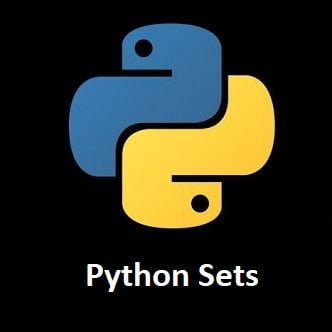
In the UK, amateur radio enthusiasts, often referred to as “radio amateurs” or “hams,” are allocated specific frequency bands for their use by the Office of Communications (Ofcom). These bands are categorized into different ranges based on wavelength and frequency.
Primary Amateur Radio Frequency Bands
Here is a summary of the primary amateur radio bands available in the UK:
High Frequency (HF) Bands
- 160 meters: 1.810-2.000 MHz
- 80 meters: 3.500-3.800 MHz
- 60 meters: 5.258.5-5.406.5 MHz (channels, with specific usage conditions)
- 40 meters: 7.000-7.200 MHz
- 30 meters: 10.100-10.150 MHz (CW and digital modes only)
- 20 meters: 14.000-14.350 MHz
- 17 meters: 18.068-18.168 MHz
- 15 meters: 21.000-21.450 MHz
- 12 meters: 24.890-24.990 MHz
- 10 meters: 28.000-29.700 MHz
Very High Frequency (VHF) Bands
- 6 meters: 50.000-52.000 MHz
- 4 meters: 70.000-70.500 MHz
- 2 meters: 144.000-146.000 MHz
Ultra-High Frequency (UHF) Bands
- 70 centimeters: 430.000-440.000 MHz
- 23 centimeters: 1.240-1.300 GHz
Super High Frequency (SHF) Bands
- 13 centimeters: 2.300-2.450 GHz
- 9 centimeters: 3.400-3.475 GHz
- 6 centimeters: 5.650-5.850 GHz
- 3 centimeters: 10.000-10.500 GHz
Extremely High Frequency (EHF) Bands
- 1.2 centimeters: 24.000-24.250 GHz
- 6 millimeters: 47.000-47.200 GHz
- 4 millimeters: 75.500-81.500 GHz
- 2.5 millimeters: 122.250-123.000 GHz
- 2 millimeters: 134.000-141.000 GHz
- 1 millimeter: 241.000-250.000 GHz
These bands provide a wide range of frequencies for various types of communications, including voice, data, and digital modes. Amateur radio operators are required to follow specific regulations and guidelines set by Ofcom, which include adhering to power limits, operating within allocated frequencies, and using proper call signs.
Secondary Amateur Radio Frequency Bands
In the UK, secondary bands for amateur radio refer to frequency bands where amateur radio operators are allowed to operate but do not have primary access. In these bands, amateurs must operate on a non-interference basis with primary users, meaning they must not cause interference to and must accept interference from primary users. Here are the secondary bands allocated to amateur radio enthusiasts in the UK:
High Frequency (HF) Bands
- 60 meters (5 MHz band): 5.258.5-5.406.5 MHz (Specific channels, secondary basis, and usage conditions apply)
Very High Frequency (VHF) Bands
- 4 meters: 70.000-70.500 MHz (Secondary basis, shared with other services)
Ultra-High Frequency (UHF) Bands
- 70 centimeters: 430.000-440.000 MHz (Secondary basis, shared with primary users)
Super High Frequency (SHF) Bands
- 13 centimeters: 2.300-2.450 GHz (Secondary basis, shared with primary users)
- 9 centimeters: 3.400-3.475 GHz (Secondary basis, shared with primary users)
- 6 centimeters: 5.650-5.850 GHz (Secondary basis, shared with primary users)
- 3 centimeters: 10.000-10.500 GHz (Secondary basis, shared with primary users)
Extremely High Frequency (EHF) Bands
- 1.2 centimeters: 24.000-24.250 GHz (Secondary basis, shared with primary users)
- 6 millimeters: 47.000-47.200 GHz (Secondary basis, shared with primary users)
- 4 millimeters: 75.500-81.500 GHz (Secondary basis, shared with primary users)
- 2.5 millimeters: 122.250-123.000 GHz (Secondary basis, shared with primary users)
- 2 millimeters: 134.000-141.000 GHz (Secondary basis, shared with primary users)
- 1 millimeter: 241.000-250.000 GHz (Secondary basis, shared with primary users)
In these secondary bands, amateur radio operators must ensure that their operations do not interfere with the primary users, which could include government services, military, commercial communications, and other critical services. Operators must also be prepared to accept any interference from these primary users.
Conclusion
The UK amateur radio frequency band allocations provide a comprehensive framework for radio enthusiasts to explore and experiment with radio communications. These bands, ranging from HF to EHF, offer a diverse range of frequencies for various modes of operation, including voice, data, and digital communications. The distinction between primary and secondary allocations ensures that amateur radio operators can coexist with other services, promoting efficient and interference-free use of the radio spectrum.
Whether you’re a seasoned operator or a newcomer to the world of amateur radio, the UK band plan offers ample opportunities for experimentation, learning, and global communication. Embrace the regulations, explore the frequencies, and make the most of what the amateur radio bands have to offer.
Happy transmitting, 73!
Additional Resources
Meganano
Here at Meganano we are always learning new skills in technology. We share what we learn in the hope it helps us and others on their own journey. You can find more radio guides here: Radio Guides
RSGB:
The Radio Society of Great Britain (RSGB) is the national membership organization for amateur radio enthusiasts in the UK. The RSGB’s website provides a wealth of information and resources for both current and aspiring radio amateurs.
The website for the RSGB is www.rsgb.org.



